From Ceausescu's Romania to West London
Local artist Mariana Gordan on how she escaped from a communist regime
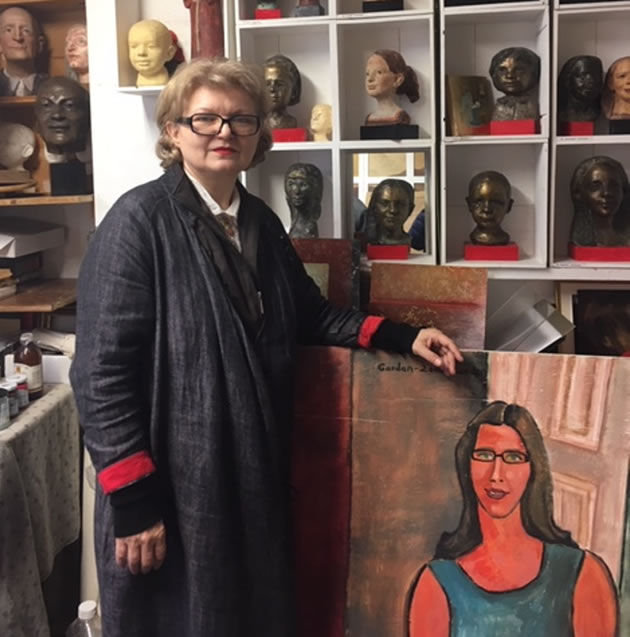
|
Mariana Gordan is a Romanian artist and sculptor who made a daring dash for freedom from the Communist Regime. Now living in Shepherd's Bush, she recently gave a talk in Chiswick about her life, her legacy, and a successful career which has seen work as diverse as a sculpted head of Clement Attlee, to mosaic work at three London tube stations.
Mariana is launching an exhibition of her figurative sculpture as well as a new collection of sgraffito oil paintings.(see below)
She grew up under the shadow of Ceausescu's regime and the family was under constant surveillance because her parents were deemed to be anti-government. Mariana's father was from a wealthy family but Communists took away the 600 hectares of their forest - her maternal grandfather was in hiding for a year because he was put on a Stalin hitlist.
Her mother was one of eleven children, and although she was considered very bright, girls married young and were expected to look after their families. Though her parents were very young when they met, they were still regarded as a threat to the state or' enemies of the revolution', because of their own families' dubious loyalty. Whole families were tainted if even one member was considered subversive, she says.
Mariana said she knew she would become an artist from the age of ten. She won a competition as a schoolgirl which she described as a 'life changing experience'. The children were allowed to design a City Of The Future. It was the word "free" which captivated her imagination, as freedom of thought and expression was unlikely in the world she lived in. Her design of an underwater city with a glass dome won First Prize and she went on to attend art college. Nevertheless, her experience there was that it was "a sausage machine" and she felt it submerged her creativity. However, it was there that she discovered her passion for sculpture and immersed herself for years studying academic drawings and sculpture.
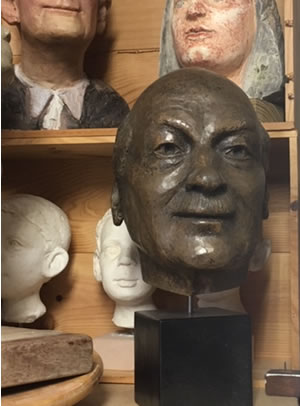
Sculpted head of Clement Attlee
In 1978, during her summer holidays, aged 19, she got a job at a hotel in a Balkan Sea resort. There were British tourists there and she befriended them despite having been warned by her mother to avoid foreigners. Two weeks later, police arrived and accused her of having imperialist friends and accepting tips in sterling, a banned currency. Though this allegation was untrue , she was promptly sacked and told she would be arrested. Some of the British tourists protested but this made matters worse. However, one of them offered to return to Romania help her escape in the boot of his car. A false passport was procured and the story of her daring escape in 1979 is detailed in her autobiography 'State Property'. She was invited to attend Durham University to be mentored by Rumanian professor of sculpture Paul Neagu (who also taught Anish Kapoor). She was sentenced to thirty years prison in absentia. It was to be ten years before she returned to her native country in 1989, ironically a week before the bloody uprising in Timisoara and regime change.
Mariana went to London and got a job in the Strand Palace Hotel. She spent all her free time in the National Gallery looking at paintings and slowly began to revisit her dream of a career as an artist.
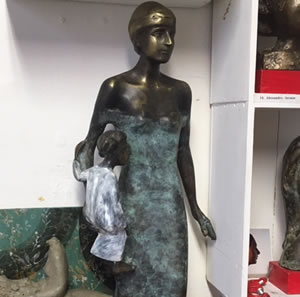
A sculpture of a mother holding a baby, inspired
by Princess Diana
Through her friend David, she met a mosaic artist who had just taken on a major contract to produce the Paollozzi's mosaic design for tottenham Court Road underground station. As Mariana had studied mosaic in 1977, she offered to help. Together they set up a company and completed mosaic production at Oxford Circus and Finsbury Park stations.
In 1985 she was short listed to the last four of 500 for a life size sculpture of Clement Attlee for the Mile End Park. Her sculpture was chosen but the judges later retracted the vote when it was revealed that the artist was a young unknown Romanian.
Undaunted Mariana gained confidence from her sculpture having been selected. She threw herself into her career, which went from strength to strength. The details of the colourful and influential members of the art scene and parties with members of the expatriate Romanian society during her years in London are detailed in her autobiography. There was, however, always the fear that somebody who appeared to be a friend could be a spy, reporting back to the Securitatae in Romania.
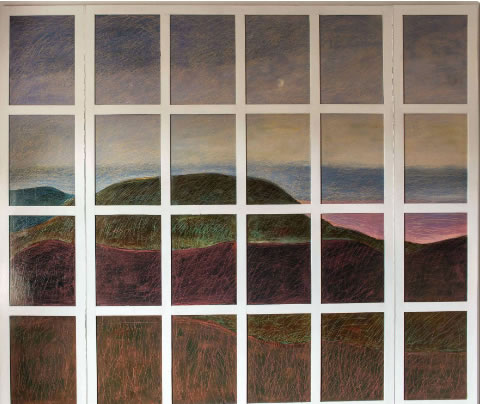
Example of sgraffito technique on Triptych
Mariana now lives and works in Shepherd's Bush. She is now free to travel to Romania as often as she wishes and plans to set up an 'artists colony' near a spa town which will contain many of her works, and which will be her legacy.
She also paints landscapes, using the sgraffito technique in order to express a wide range of emotions, "from the innocent wonder and joy of the moment to the deep sorrow brought by its ephemerality. The sgraffito technique consists of many layers of paint which I then scratch, (literally, using both ends of my brush!) to create a landscape gently defined by spontaneous and energetic lines. Just like my thoughts…barely scratching the surface!"
Mariana will be holding an exhibition of her figurative sculpture and a new collection of her sgraffito oil paintings from Sunday 5 May 11-6 pm. at Acava Studios, 62, Hetley Road W12.
She would be happy to accept commissions to paint portraits of people or animals. Here are two paintings of very cute Chiswick dogs which Mariana painted recently.
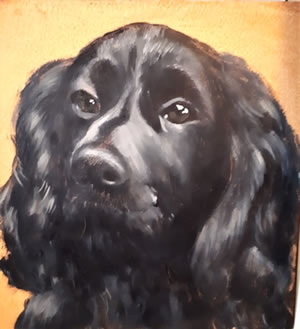
Tommy
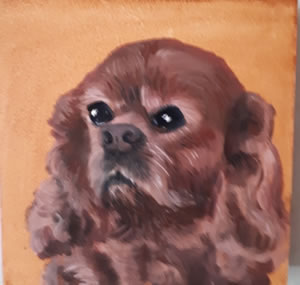
Frankie
Images courtesy of S Rodway
Anne Flaherty
April 29, 2019